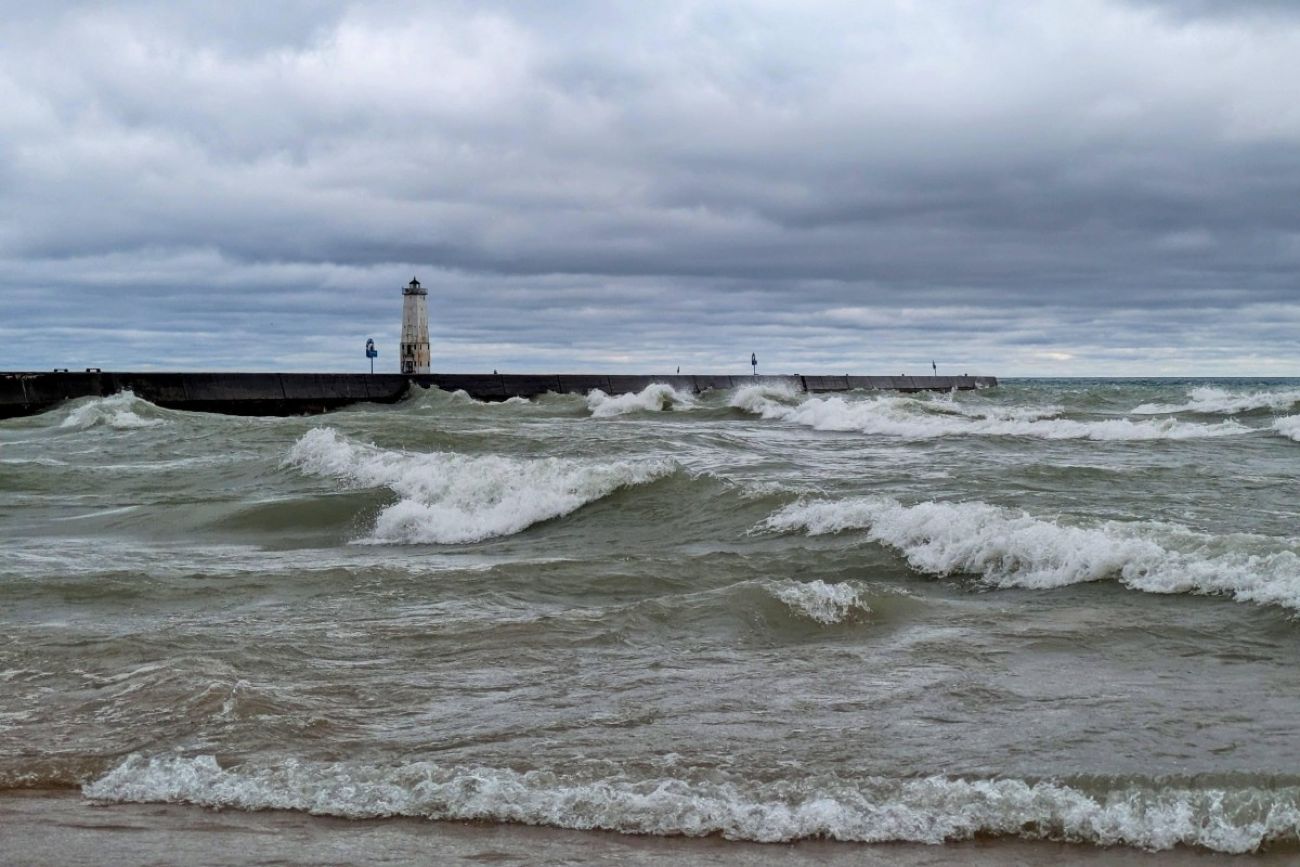Great Lakes drownings down, marine patrol funding cut

- There have been 38 drownings in the Great Lakes this year, half of them in Lake Michigan
- County police stress the importance of wearing a life jacket when boating or swimming, whether on the Great Lakes or on inland lakes and ponds
- A funding holdup has left sheriff’s offices operating with roughly half their usual budget for marine patrols and teaching boat safety
There have been 38 drownings in the Great Lakes since the start of 2025, 19 of which were in Lake Michigan.
That’s down 36% from last year, when there were 56 drownings by mid-July.
Seven of the drownings this year occurred near Michigan shores, according to the water safety group Great Lakes Surf Rescue Project.
Rip currents — powerful bursts of fast-moving water that can pull swimmers away from shore — are especially strong in Lake Michigan. They’re one reason why the highest number of drownings occur in that lake versus other Great Lakes. Last year, more than half of the 94 drownings in the Great Lakes occurred in Lake Michigan.
RELATED:
- Lake Michigan beach goes high-tech to curb drownings from rip tides
- People ignore drowning warnings, so Michigan may close Great Lakes beaches
- Bird moving ban has some worried swimmers will be itching for relief
Most Michigan Great Lakes beaches use colored flags to indicate whether the water poses a threat to swimmers.
Under the Michigan Department of Natural Resource’s beach flag system:
- A green flag means calm conditions. Enter the water, but exercise caution.
- A yellow flag means moderate surf and/or currents. Watch for dangerous currents and high waves.
- A red flag means high surf and/or strong currents. It’s recommended to stay on the beach.
- Double red flags mean do not enter the water, dangerous conditions.
By law, visitors cannot enter the water from the beach on double red flag days. Swimming at a state park despite the warning can result in a $500 fine.
Over the long Independence Day weekend, nearly a dozen people drowned in private ponds and inland lakes.
In Oakland County, Michigan’s second-most populous county with more than 1,400 lakes, four people have drowned this year, according to the county sheriff’s office. That’s on track with the county’s yearly average.
Michigan doesn’t track drownings in its inland lakes on a statewide basis, though Great Lakes drownings represent only a “small fraction” of the overall drownings in each Great Lakes state, said Dave Benjamin, co-founder and executive director of the Surf Rescue Project.
More than 4,300 people drowned nationwide in 2023, according to the most recent complete data from the US Centers for Disease Control and Prevention. That agency estimates 1.22 in every 100,000 people in Michigan drowned from 2018 to 2021, the 20th-lowest rate in the nation.
In Cheboygan county, a father and son drowned on Burt Lake over the July 4 weekend, the only drowning to occur in that county this year, said county Sgt. Earl Manuel.
“Out of all the drownings I’ve ever been to — I’ve been here almost 20 years now with the sheriff’s department — not one time has someone been wearing a life jacket,” Manuel told Bridge Michigan.
In addition to swimming without a life jacket, alcohol is “almost always a factor” in drownings on inland lakes and boating accidents, Oakland County Sheriff’s Office Lt. Brian Burwell said.
Meanwhile, a funding dispute between the Trump administration and the state has forced some sheriff’s offices to downscale their marine patrols on lakes and rivers this summer.
The US Coast Guard gives state and local agencies grant money to support marine law enforcement, boating safety education and infrastructure improvements. The money in Michigan is administered by the state Department of Natural Resources.
For Michigan this year, that grant amount totaled $7.3 million, broken down into $4.7 million to the DNR for its marine operations, $1.3 million to pass through to county sheriffs and $1.3 million for maintaining state-managed boat launches.
Because the Trump administration included an “unlawful” immigration enforcement term in the grant agreement, the state is not taking the federal funding, DNR spokesperson Ed Golder wrote in an email to Bridge Michigan.
In June, the DNR issued $1.3 million in state grant funding to local sheriffs to support marine operations, about half the funding that the state and federal government gave out last year.
Burwell, of Oakland County, said the funding shortage has driven the county to curtail its public boat safety classes and cut down on its boat patrols.
Dive and rescue team leaders across southeast Michigan have also said they cannot afford new gear or specialized tools to assist in recoveries, said Burwell, who helps coordinate the Southeast Michigan Dive Group.
“The standard theme across the board is people struggling for funding,” he said.
Here are some safety tips from the DNR on how to stay safe in the water:
- Before leaving home for any beach outing, check local weather reports and lake conditions.
- Always swim with a buddy or an observer on shore, regardless of your swimming abilities.
- When near the water, keep small children in a US Coast Guard-approved life jacket, even when playing on shore in the sand. Always watch and never turn your back on children in or near the water.
- When visiting a state park, swim in the buoyed swim areas. Those areas have safety features like buoys that mark water depth less than 5 feet, beach flag warnings and rescue equipment. Not all state parks have designated swim areas.
- There are no beach guards in state parks. Visitors must swim at their own risk and are asked to prioritize safety.
- If you get stuck in a current. The DNR advises people to flip on their back, float to conserve energy and swim perpendicular to the current’s flow.
- Don’t swim near piers and breakwalls because strong structural currents can form.
Michigan Environment Watch
Michigan Environment Watch examines how public policy, industry, and other factors interact with the state’s trove of natural resources.
- See full coverage
- Subscribe
- Share tips and questions with Bridge environment reporter Kelly House
Michigan Environment Watch is made possible by generous financial support from:
Our generous Environment Watch underwriters encourage Bridge Michigan readers to also support civic journalism by becoming Bridge members. Please consider joining today.
See what new members are saying about why they donated to Bridge Michigan:
- “In order for this information to be accurate and unbiased it must be underwritten by its readers, not by special interests.” - Larry S.
- “Not many other media sources report on the topics Bridge does.” - Susan B.
- “Your journalism is outstanding and rare these days.” - Mark S.
If you want to ensure the future of nonpartisan, nonprofit Michigan journalism, please become a member today. You, too, will be asked why you donated and maybe we'll feature your quote next time!






